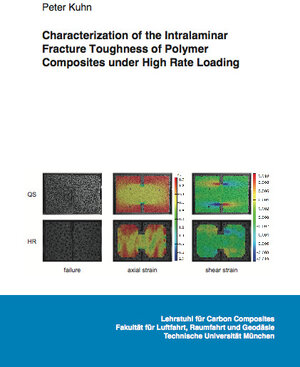Characterization of the Intralaminar Fracture Toughness of Polymer Composites under High Rate Loading
von Peter KuhnThe thesis presents an experimental method to measure the crack resistance curve for the intralaminar fiber failure modes of fiber-reinforced polymer composites under dynamic loading. The strain rate sensitivity of the fracture toughness properties for fiber compressive and tensile failure for both a carbon-epoxy and a glass-epoxy material is determined. Dynamic compression and tension tests at strain rates in the order of 100 1/s are performed using a split-Hopkinson pressure and split-Hopkinson tension bar setup, respectively, while quasi-static reference tests are conducted on a standard electromechanical testing machine. The data reduction scheme couples the concepts of the energy release rate, the crack resistance curve and the size effect law. For the determination of the latter, double edge notched specimens of various sizes are tested and different fitting approaches are investigated. In addition, tests with unnotched specimens are performed to obtain the elastic properties of the carbon-epoxy and glass-epoxy laminates, if not available from literature. The data reduction methodology applied in this thesis is suitable for intralaminar fiber failure modes without significant delamination. Sufficient proof is given that quasi-static fracture mechanics theory can also be used for the data reduction of the dynamic tests. To further verify the validity of the experiments performed at both static and dynamic loading, digital image correlation is applied. Besides evaluating the strain field distributions during the tests of the double edge notched specimens, the calculated strain and displacement data are the starting base for a detailed study of the strain and kinetic energy terms, respectively. Furthermore, an approach which enables the evaluation of the validity of split-Hopkinson bar test even in the case of wave superposition is introduced.






